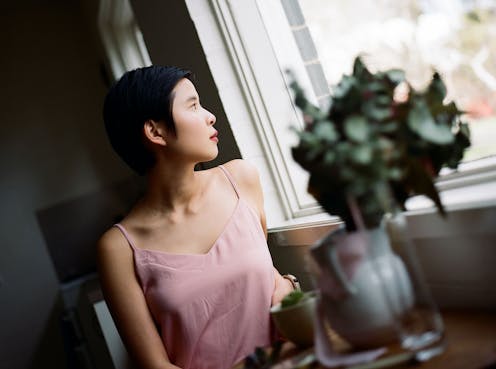a vivid, playful debut disrupts clichés of docile Asian womanhood
- Written by Roanna Gonsalves, Lecturer in Creative Writing, UNSW Sydney

Many contemporary novels adamantly refuse readers a pleasurable reading experience – with clunky prose and a cloying earnestness. But life’s too short for boring books.
Mercifully, Jessica Zhan Mei Yu’s debut novel, But The Girl[1], is effervescent on the page. It enhances the pleasure of reading with the lively voice of its narrator and its control of narrative pace.
Review: But the Girl – Jessica Zhan Mei Yu (Hamish Hamilton)
The story follows a young writer’s journey as she travels to a writing residency and a postcolonial conference – from Melbourne to London, then on to Arbroath, Scotland. It’s the spring of 2014, in the wake of the tragic disappearance of Malaysian Airlines Flight MH370[2].
The narrator is a Chinese-Malaysian-Australian writer and this configuration of identity is foregrounded in the narration. Yu has also written non-fiction[3] about the hyphenation of identity.
However, the cultural significance of this novel is all the more noteworthy because of the author’s imaginative labour, the work’s formal refinement, the care taken with language and pacing.
As the narrator says,
I had a sadomasochistic fascination with English: it hurt me, and it gave me acute pleasure. But I also wanted to be the one to hurt it back, to teach it new tricks, to stand over it, to win its favour, to know it better than it knew me, to mangle it and deform it and remake it into my own image.
Telling it slant
Towards the end of the book, the narrator notes, “I was still the same person who rather than growing upwards found myself moving slantways, downwards, backwards, forwards through life”.
This self-awareness of movement against expectations infuses the book’s unapologetic over-sharing through the chatty, first-person narration with a sense of doubt and uncertainty. It’s a refreshing commitment to self-critique and a refusal of foreclosure.
It also provides a method for writing and for reading this book, the narrator presumably drawing not only from Emily Dickinson[4]’s oft-quoted prescription to “tell it slant[5]”, but also from the “slantwise” expressions of love in Chinese poetry (“in riddles, in rhymes, coyly”).

















